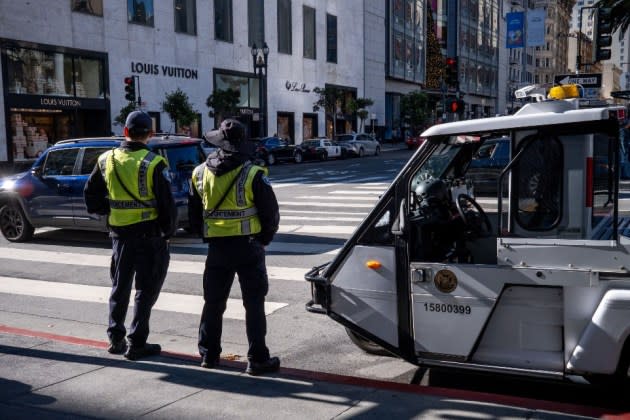California’s Most Populous Counties See Uptick in Commercial Theft

California’s largest markets have been among the hardest hit by the rise in retail crime—and thieves are upping the stakes by stealing greater volumes or higher-valued products.
That’s according to Public Policy Institute of California (PPIC) director and senior fellow Magnus Loftstrom, who testified before the California Little Hoover Commission, an independent state oversight agency, on Thursday. The Commission investigates government operations and policy to inform recommendations for the governor and the state legislature.
More from Sourcing Journal
California to Prohibit the Use of Recyclability Labeling on Ineligible Products
AAFA Pushes Back on Washington State's Proposed PFAS Regulations
“Recent trends in retail theft vary across the state and by type of offense—but the data indicate a rise in shoplifting, especially in the Bay Area, and a broader rise in commercial burglary among urban counties,” Loftstrom said.
The concentration of incidents of organized retail crime and retail theft in certain areas—mostly cities like San Francisco and Los Angeles, as well as other highly-populated areas—has contributed to the differences in how retailers and Californians perceive the issue, he added. Underreporting of low-value crimes, too, could plausibly skew data and obscure the true magnitude of the issue.
“It is important not to limit analyses of retail theft to shoplifting, especially given that Prop. 47 (passed in November 2014) reclassified a number of property and drug offenses from felonies to misdemeanors,” Lofstrom said. Under the law, also known as the Safe Neighborhoods and Schools Act, retail property theft valued under $950 can only be tried as a misdemeanor. Theft of goods worth more can be charged as a felony, and is captured in California Department of Justice (CADOJ) data as commercial burglary.
There are some critical holes in the state’s reporting. Comprehensive data from the whole of California only extends to December 2022—and it only includes incidents that were reported to police. Local law enforcement agencies categorize offenses differently, further impeding the standardization of data. Smash-and-grabs and organized retail crimes aren’t classified differently than other retail crimes, so it’s difficult to pinpoint a rise in those behaviors.
Shoplifting increased by 29 percent between 2021 and 2022, but on a statewide level, it’s still 8 percent below pre-pandemic levels, Loftstrom said. Certain areas have seen disproportionate increases; Los Angeles has seen a steady climb since mid-2021, and by 2022, it was 10-15 percent above pre-pandemic levels. Urban counties like Sacramento, San Mateo, and Riverside, too, have seen shoplifting trend upward.
Commercial burglary—theft from a retail establishment worth over $950—has been on the rise throughout the state, jumping 16 percent from 2019 to 2022. It’s also 15 percent above the 2014 rate.
“Increases in commercial burglary in urban counties are more widespread,” Loftstrom said. Such crimes rose across 14 of the state’s biggest counties between 2019 and 2022, with the most marked increases in Fresno (71 percent), Alameda (65 percent), and Orange County (54 percent). By 2022, “commercial burglary was up in 21 of California’s 58 counties relative to 2019—mostly in large urban counties—home to 82 percent of the state’s population,” Loftstrom said.
Ultimately, more data is needed if trends are to be accurately assessed, and that will take greater cooperation between retail and police. “Retailers may be less likely to report incidents if law enforcement responses are lacking, and offenders may be more likely to commit retail theft if there is a low likelihood of apprehension and limited consequences,” he added.
“To analyze the significance of law enforcement responses, researchers need data on initial responses to calls for service, whether an arrest was made for a given incident, whether the case was referred to the district attorney, whether and what charges were filed, and the final disposition of the case,” Loftstrom said.

